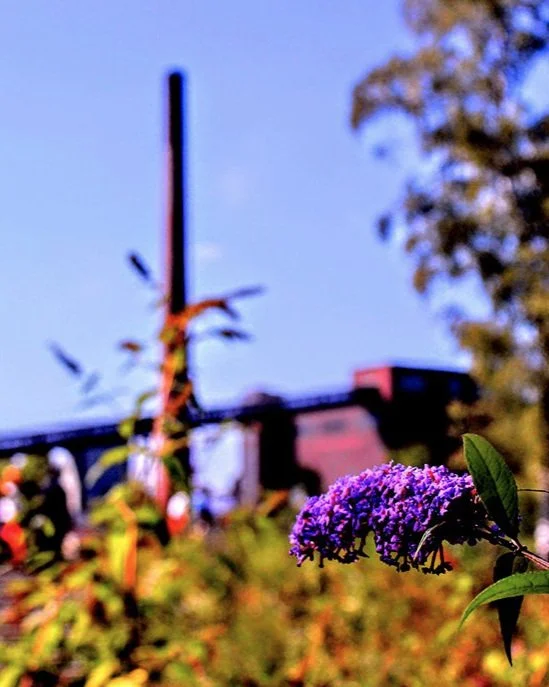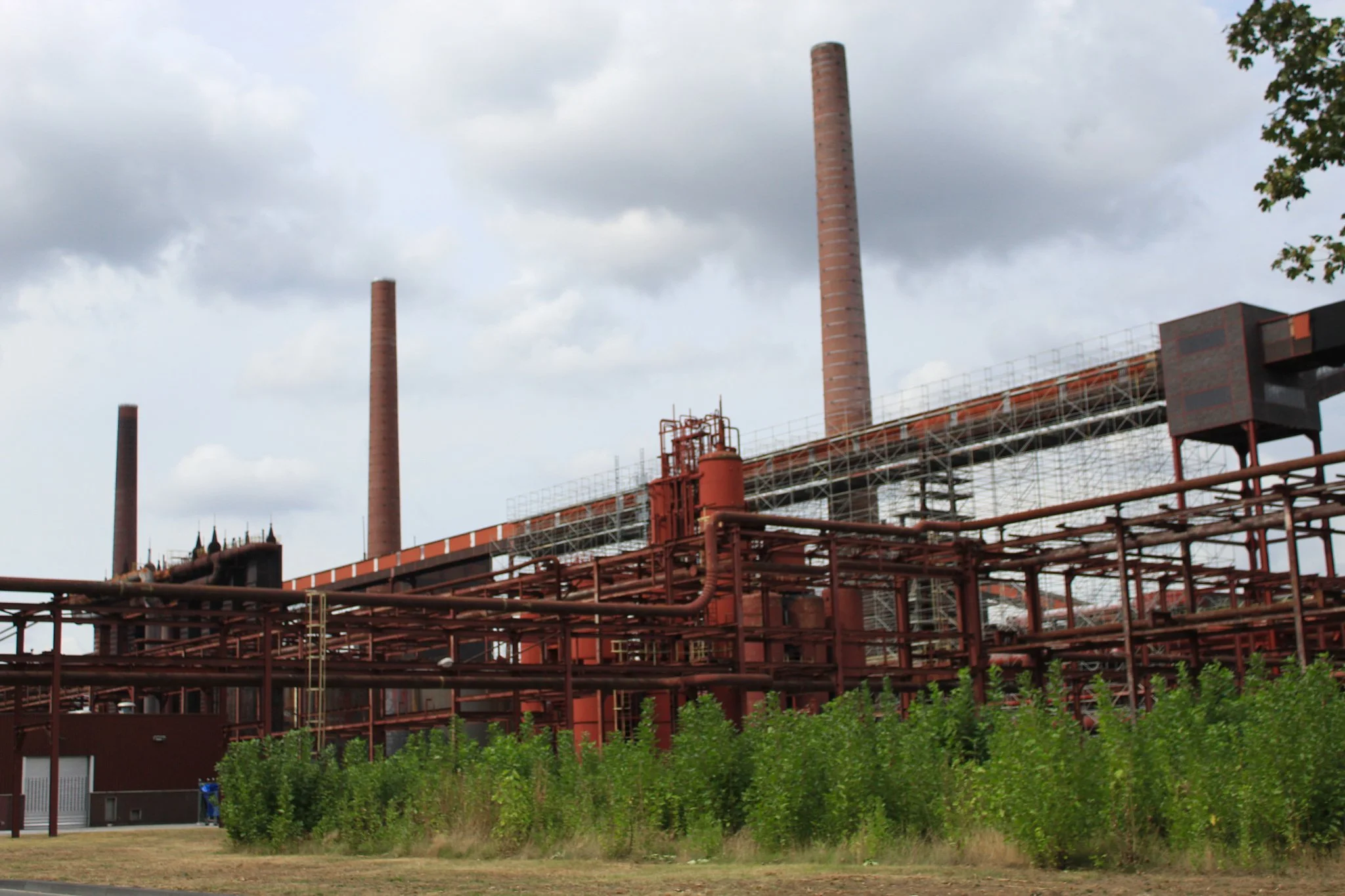Industry, Utopia, Nature, Dystopia
It has been a dystopian day riding along the Jordan River Trail in Salt Lake City. It has been dreary and rainy. It got colder. But the Jordan River Trail is a kind of dystopia all its own. I actually think that most rivers are natural or intentional dystopias. They are dystopias in the sense that they frusrate our expectation as a landscape. They are too swollen or too thin. They frustrate our desire for sustainability. We need to control the floods, make them predictable year over year. A river is always a dystopia in the sense that isn’t expected. A Utopia on the other hand had a kind of predictability that isn’t so easy to maintain. Usually, we think of a Utopia as a ‘planned’ city. Like a river, a planned city forever frustrates the intention of both planner and user. I think of this a lot when biking on a grid like in Salt Lake City. Hills frustrate the planning and numbering – but then one would have to ask why build a street straight up a hill? This happens a lot in the grid planning of American cities whether San Francisco, or Pittsburgh, or Salt Lake City’s east side. One notices mere topias on a perpetual bicycle tour after a while. Dys- or U- topias don’t really enter into the question of what is here now. Not what should be here or what was here.
Riding around today, I was thinking of the ideas of dystopias, utopias and how industry intrudes or shapes both of these ideas. As I said last week, I have been editing photos from my various biking adventures – long and short, near and far. One of the things that keeps cropping into my landscapes is this intersection of industry and of nature. I spent some time in the so-called Ruhr-Gebiet heavy industry areas of Germany a few seasons back. I had a chance to visit the Zollverein site. It used to be a coal mine and processing area on the edge of the city of Essen. The coal industry declined in the 1970s and 1980s and the Zollverein site has since been named a UNESCO World Heritage site. The area is now a large-scale public use area with cafes and rides and even an industrial design museum. In German, this intersection of industry and nature is simply signified as ‘Industrie Natur.’ When I visited the World Heritage museum, inside the old Zollverein buildings there was a small exhibition of photography detailing the way the landscape had changed over the course of 150 years of heavy industrialization and its eventual ‘return’ to nature.
It is February, everything is washed-out, the old season’s remnants are being blown away and swept up – like the leaves that finally fall off the trees. It was a little warmer earlier this week, so I had a chance to sweep up some loose final leaves that have been blown around the back patio and gotten into the window wells and such. This is really the only garden activity for this time of year. Just a little bit of maintenance is required, a little attention. But as I was cleaning up the leaves, I got to thinking about what is the ‘natural’ use of the leaves we collect and usually have hauled away? Wouldn’t it be better to leave them where they naturally fall so they can be habitat or food for the natural things in the garden? Again there’s an idea behind this concept industrie natur and a return, a regeneration.
But nature will never come back the same way twice. This notion comes up when studying wildflowers and plants written up in various guides or identification books. There is invariably a discussion of plants that are ‘invasive’ or that grow in ‘disturbed’ areas. There is an implicit identification of ‘balance’ and an idea that people’s entry into the equation somehow disrupts this balance. This also seems to imply that there is a ‘right’ or a ‘wrong’ plant growing in any area at any given time. But the fact remains, whether invasive or wrong, it is here, right now. Then the ‘right to life’ discussion can be had also for plants that aren’t ‘planned’ or ‘timed’ correctly. The funny thing is that many of these invasive plants are often decorative ones used in gardens. Things like bamboo – which can grow right up through floorboards, or butterfly bush (buddleja) – which can grow out of walls, or the Japanese bindweed which, according to British gardeners could probably destroy all of society. Again there’s an implicit right or wrong about these garden plants become more than weeds, but invasive, property value eating monsters. To read some of the stories about bindweed in the British press, one would think that a dangerous plant-like alien is stalking the back gardens of good British gardeners like in the movie Invasion of the Body Snatchers.
I have been thinking about this industrie natur idea over the past week on my Jordan River Trail rides. The Jordan River in Salt Lake City is completely embedded in the industry of the city. It is at best a once natural river that has been turned into an industrial canal. Our local river among all these Great Basin valleys where rivers have no communication with the ocean keeps any water flows small, contained. But I think about my trips along bigger rivers like the Tay in Scotland or the Rhine in Germany. All along these rivers they’ve been historically and presently utilized for the industrial benefits they provide – cooling water for power plants, irrigation, direct sources of food, waste storage, goods transportation. Still, along all of these rivers, indeed even in the midst of this crowd of industrial impacts and disturbances, there is a kind of peacefulness of flow. The river flows and it does not itself know where it goes. This is as true of human industry as it is of nature and the two become, ultimately, inseparable.
Of course what we mean with the term ‘industrienatur’ in a more narrow sense, is this idea of ‘post-industrialization.’ What happens when the large durable infrastructure projects have been built and the requirements for raw coal or for steel are not locally present or necessary any longer. There are many places in the world like Essen, Germany where for two or three generations heavy industry was the entire identity of the place. This is true of other places like Pittsburgh, Pennsylvania, or Detroit, Michigan as well. The industrial character is not merely a landscape environmental feature, it touches the social landscape and the collective psychological landscape of a place as well. Rivers are interesting that way, they flow through heavy industry. Why do we make this distinction in one word – industrienatur? The preservation of industrial sites still doesn’t have the same status as preserving a pre-industrial site does it? There is something unholy in it. I have to admit I was a little disappointed with the collection of world heritage in Essen. Preservation seems to have merely turned the area into a typical fair of attractions for visitors or locals. There’s now ‘venues’ where once serious coaling and steel-making work was done. In the halls where coal was processed and loaded, now there’s an industrial design museum that has various expensive designer consumer products.
This is all set in a large industrial park – where people stroll or enjoy the sunshine or have a beer at a biergarten. The large shaft heads that dot the landscape are a kind of midway for a post-industrial fair. Large forestation has actually returned to the area. Here the idea of a post-industrial utopia springs up. But outside the little walled zone of a heritage site or a nature park is the true nature of the world – where superhighways and an artificial and synthetic order intrudes. This is all brought by the form industry has taken in the past and how it is built over or overgrown in the future. These are thoughts I’ve had this week biking around, it is easier to see behind the hedges when there’s no leaves on them. In a bleak February light things are laid out a bit more honestly. We are in the midst of a kind of industrial overload, building this utopia of dreams all the way out here. Looking back over my photos while biking this winter, I realize what a barren place we live in. Nature doesn’t so easily ‘cover’ everything again. The grass does not grow as easily as it does in Carl Sandberg’s poem “Grass.” But the grass will be green again in a few months, there will be leaves again. The water continues down whatever river it finds itself in.









